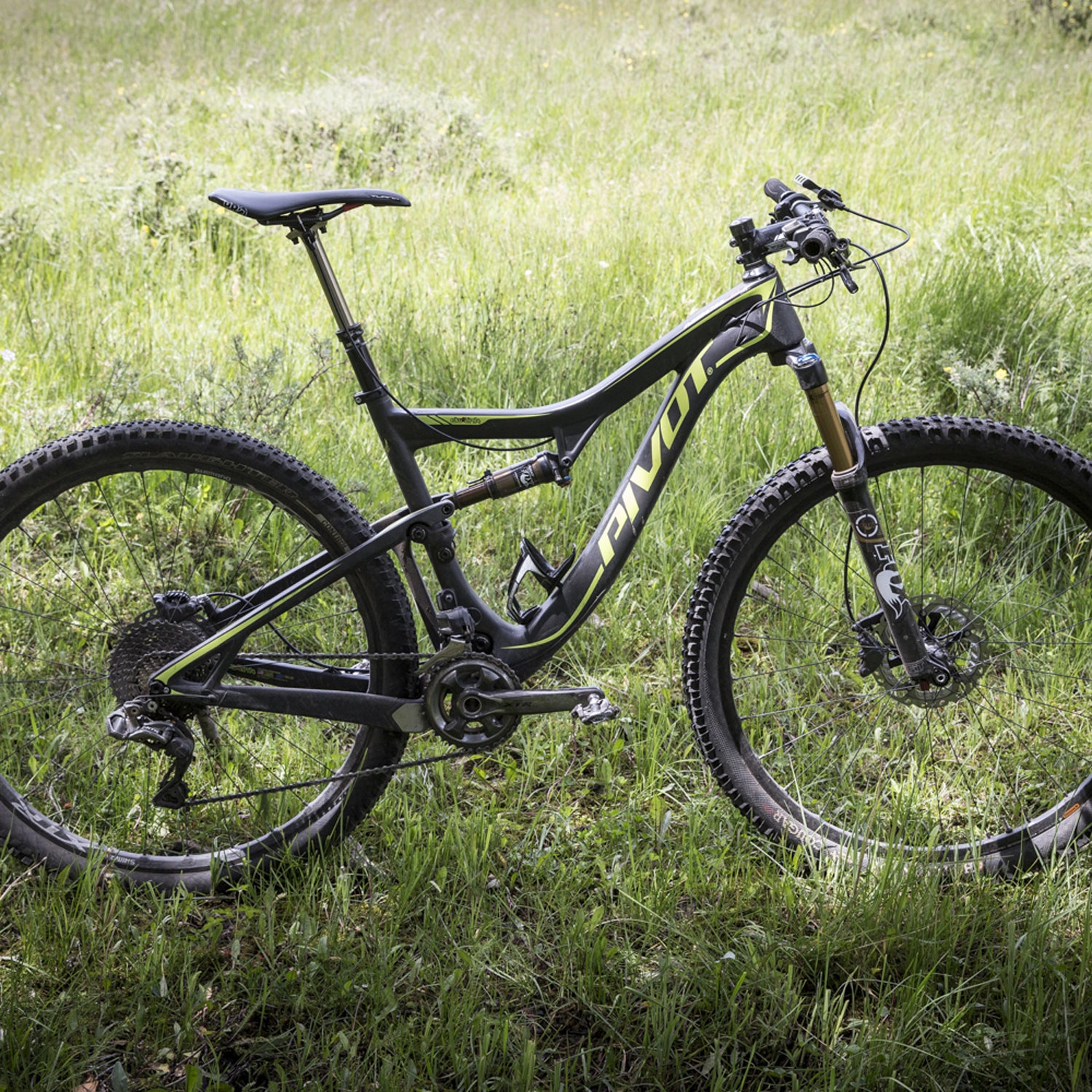Last September at Interbike, Shimano showed its first working samples of Di2 for the dirt crowd, and the 30-odd minutes we got to ride the prototype left us captivated. Shifting was fast and accurate, programming was customizable, gearing ranges were bigger than ever, and the system even had a brain of its own that promised to shift better than we could.
Half an hour of riding is good for a first impression, but not a full review. Would the electronics survive the grime and wet of real-world riding? How would the industry-best precision and accuracy maintain after weeks and months of rattling and impacts? And what about battery life: Would Di2 leave us stranded in the mountains?
Earlier this spring, Shimano provided a test groupo, built onto a *, that I could beat up for the long term to get those answers. Six months later, my initial impressions hold: XTR Di2—if you’re willing to pay for it—is unquestionably the finest drivetrain option for mountain bikes that money can buy.
That Price
Let’s first talk about price, because many will look at the cost and immediately shrug off Di2 as outrageous. Our double chainring setup with both shifters sells for around $3,500, including wiring, battery, display unit, and crank. That’s a $1,500 premium over a comparable, previously top-of-the-line mechanical XTR groupo. You can buy excellent complete bikes for less than that. So, yes, XTR Di2 is expensive.
If you want to be an early adopter, you’re going to pay a premium. If you want to save some cash, wait a few years, because hopefully there’s an XT version in the works.
But all electronics are expensive when they’re first released. DVD players used to cost $1,000 or more when they first came out. LED televisions went for $10,000 and up. Now those gadgets are ubiquitous and can be had for a fraction of those prices. Shimano is charging a lot for Di2 because it’s the first of its kind and the company has invested a lot of R&D into producing it. As the manufacturing ramps up and competition increases, prices will tumble, as they’ve already done on the road bike market (consider Ultegra Di2 and the electric commuter setups).
How It Works
My bike came with a 2×11 drivetrain with a 36-26 chainring combination in front and an 11-40 cassette. (Shimano offers four additional front ring combos, as well as single and triple options.) The battery for my system is stowed in the hatch on the bottom of the Mach 429SL Carbon down tube, which is engineered just for that purpose.
The shifter paddles are sleek and ergonomic and can be configured and adjusted to fit most hands. Each shift produces a crisp, tactile click—much better than the sometimes ambiguous feel of road Di2—with one click on the top button and two on the bottom for dumping gears in a hurry. If you hold down either button, the system will run through the gears in whichever direction you’ve chosen until you release the shifter.
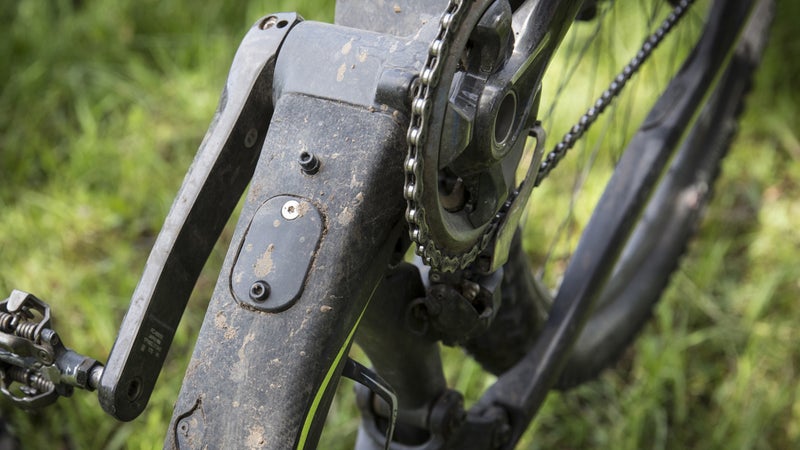
The function on every button in the system is customizable and programmable, which means if you want your right hand to control your front derailleur, all you have to do is plug the system into a computer and make that choice. Or you can make the top buttons on both shifters move the rear derailleur and the bottom button on each move the front. Or whatever you like.
And the system is even smarter than that. It has two ways of working: manually, where you control every shift, and Synchro, which helps you avoid cross-chaining and optimizes your pedaling by automatically shifting the front and rear derailleur for you as you move the rear shifter up or down. The screen unit on the bar displays all the info you need—what gear you’re in, front and rear; what mode; and battery life—every time you or the system shifts.
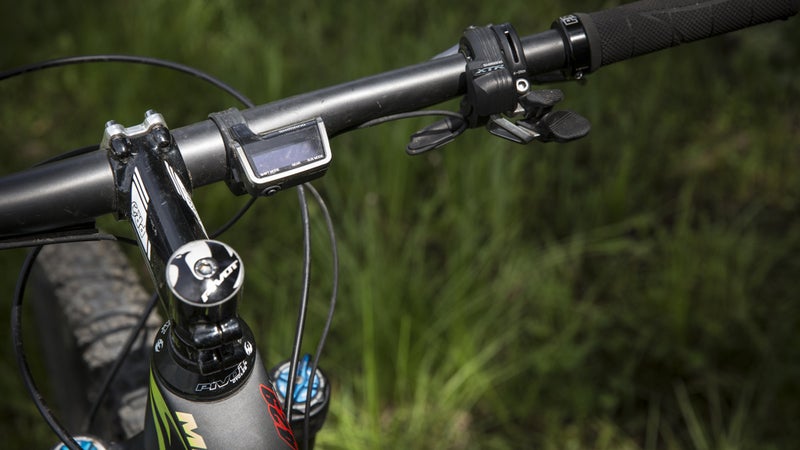
Relinquishing control to a computer sounds scary at first. But the truth is, after months of riding, I got used to it (and even grew to like it), to the point that I sometimes ride mechanical drivetrains and wish they would shift for me. Sounds crazy, I know. An audible chime would sound when the front and rear were about to shift so you knew what was happening. That also sounds like it could be annoying, but barely even noticed it once I got used to the system.
Most of the time, the computer was at least as smart as I am and put me in the right spot on the drivetrain without me even noticing. I say most of the time because occasionally I found it shifting a bit more than I naturally would. Looking back, however, I realized this was because of the relatively small chainring in front—if I configured my own system, I’d choose at least a 38 big ring to minimize shifting and maximize range.
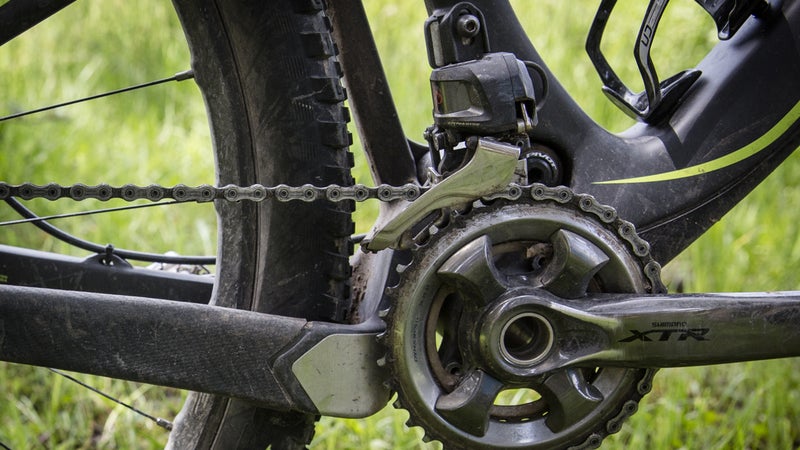
The Synchro system is so optimized that you can completely remove the left/front derailleur shifter, even with a double or triple setup. I did this once, and it was fine. But I actually like having the option of overriding the computer, so I returned to two paddles relatively quickly, even though I still rarely use the left/front one.
Apart from the customization and programming, the shifters worked flawlessly. Over the course of six months, I didn’t adjust a derailleur once, partly because there’s no cable stretch to contend with. The cables are just wires that convey electronic signals. This also means I got a perfect shift every time, faster and more accurately than I could muster on my own. Thanks to powerful motors in the derailleurs, shifting under hard load (when climbing or sprinting) was totally fine, too.
Battery Life/Durability
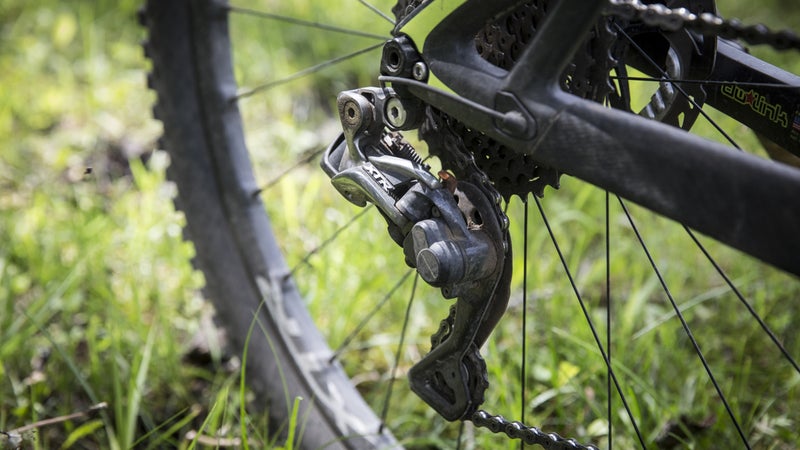
Worries about battery life are completely overblown. Shimano says the battery will last up to 40 hours, and I think that’s conservative. In six months of testing, with at least a couple of rides per week (including a few 10-hour epics), I charged the battery only twice.
The system has also held up just fine in the muck. We’ve had one of the wettest springs and summers on record in Santa Fe, and I’ve plowed through mud and crossed more thigh-deep streams than I care to admit. But each time they got inundated, the electronics functioned perfectly.
Bottom Line
XTR Di2 is an incredible system but not a perfect one. My number one gripe: The software is not Apple compatible, so if you want to customize any of the settings, you have to own (or borrow) a PC. In the publishing industry, this is basically like saying the thing doesn’t work. Frankly, it’s the one reason I could never realistically consider owning Di2.
My other complaint: It has wires. The wires didn’t really affect my experience, but a wireless system would be far more graceful. With SRAM poised to launch its own wireless road group in the near future, I think Shimano must be working on version 2.0 already.
Complaints aside, still works better than anything else on the market. It’s fast, seriously accurate, completely customizable, and looks beautiful to boot. It is, in my opinion, the future of components. If you want to be an early adopter, you’re going to pay a premium. But if you want to save some cash, wait a few years, because hopefully there’s an XT version in the works.
*This article has been updated. We previously misstated the Pivot bike model.


